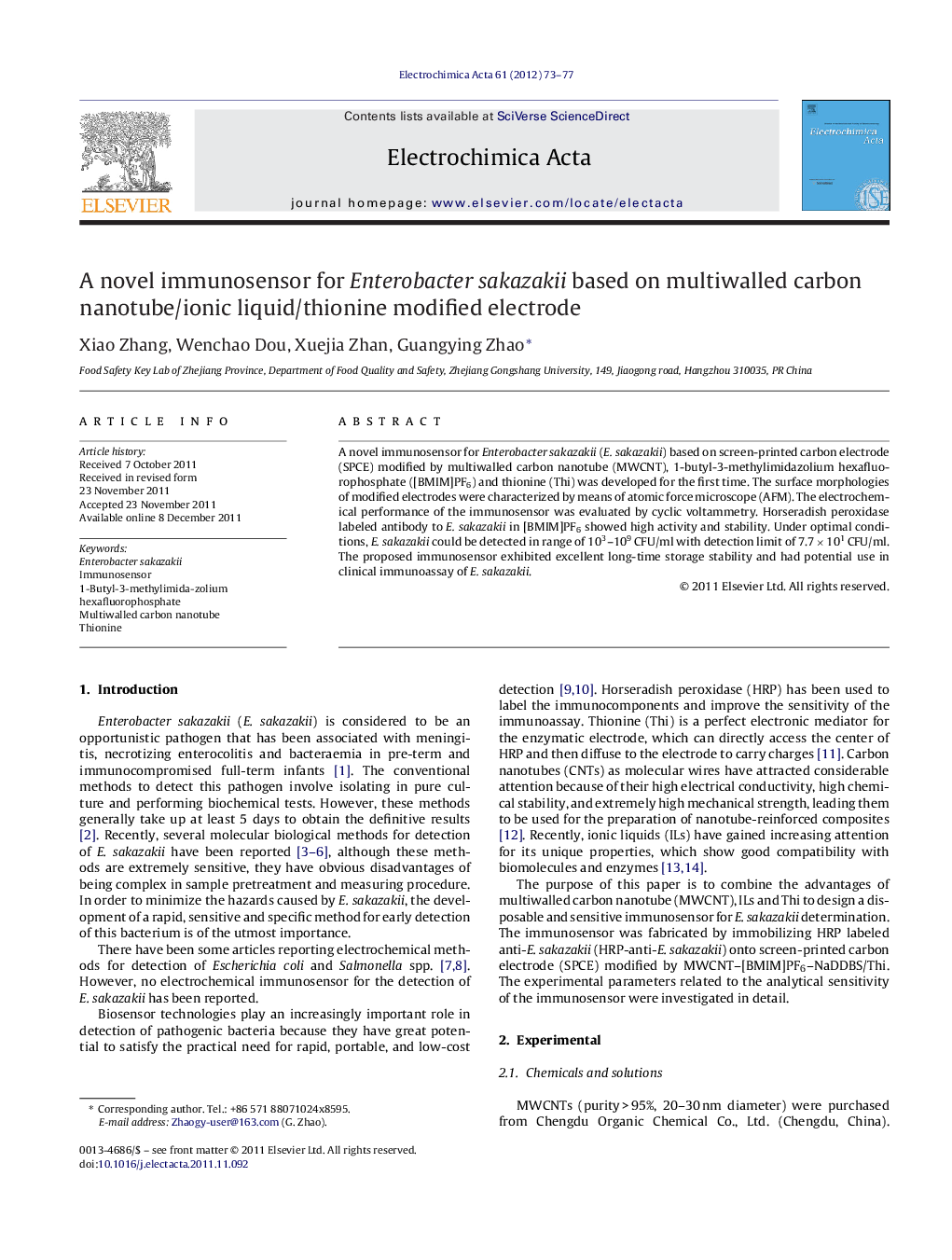| Article ID | Journal | Published Year | Pages | File Type |
|---|---|---|---|---|
| 188926 | Electrochimica Acta | 2012 | 5 Pages |
A novel immunosensor for Enterobacter sakazakii (E. sakazakii) based on screen-printed carbon electrode (SPCE) modified by multiwalled carbon nanotube (MWCNT), 1-butyl-3-methylimidazolium hexafluorophosphate ([BMIM]PF6) and thionine (Thi) was developed for the first time. The surface morphologies of modified electrodes were characterized by means of atomic force microscope (AFM). The electrochemical performance of the immunosensor was evaluated by cyclic voltammetry. Horseradish peroxidase labeled antibody to E. sakazakii in [BMIM]PF6 showed high activity and stability. Under optimal conditions, E. sakazakii could be detected in range of 103–109 CFU/ml with detection limit of 7.7 × 101 CFU/ml. The proposed immunosensor exhibited excellent long-time storage stability and had potential use in clinical immunoassay of E. sakazakii.
Graphical abstractFigure optionsDownload full-size imageDownload as PowerPoint slideHighlights► Constructed a novel immunosensor using MWCNT/[BMIM]PF6/thionine for E. sakazakii. ► Optimum conditions for the detection of E. sakazakii were investigated. ► The properties of proposed immunosensor were studied by AFM and CVs. ► The biosensor exhibited good specificity, reproducibility, stability and accuracy.
